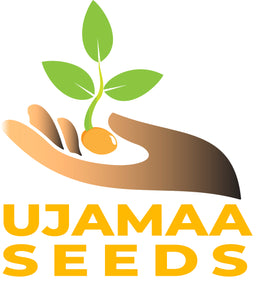Yellow Cabbage Collards
Brassica oleracea
Approximately 70 seeds per pack.
Germination ~ 92% Oct 2024 Packed for 2025
Origins and History
Yellow Cabbage Collards are a beloved North Carolina heirloom. Considered to have milder flavor and more tender leaves than most collards, the yellow-tinted leaves of 'Yellow Cabbage Collards' form a loose head. Seed for cabbage collards is very hard to come by.
The Yellow Cabbage Collard is a treasured heirloom from the Southern United States, especially North Carolina and surrounding regions. Thought to date back at least to the 19th century, it belongs to the unique “cabbage collard” group—collards with a more compact, cabbage-like habit rather than the typical loose leaves. The “yellow” name refers to its distinct leaf coloration. This collard has been maintained through careful seed saving by farming families, making it one of the culturally significant varieties passed down through generations in the South. Overall, Yellow Cabbage Collards are not only a delicious and nutritious green but also a living piece of agricultural and cultural history.
Appearance and Characteristics
Yellow Cabbage Collards are distinguished by their crinkled, tender leaves that carry a yellow-green hue, sometimes with golden overtones, unlike the deep green of most collards. Plants form a semi-heading habit, giving them a cabbage-like rosette. The leaves are smooth-textured and slightly thinner than standard collards, which contributes to their renowned tenderness and mild, sweet flavor. Compared with other collards, they are less bitter and cook quickly, making them a preferred variety among collard enthusiasts.
Culinary Uses
Highly prized in Southern kitchens, Yellow Cabbage Collards are valued for their sweet and mild taste. They are traditionally stewed or braised with smoked meats, onions, and peppers, often seasoned with vinegar or hot sauce. Because of their tender texture, they require less cooking time than standard collards, making them versatile for sautéing, stir-fries, or adding fresh to soups. Their distinct flavor also makes them popular for holiday meals and community gatherings where heirloom collards remain a cultural staple.
Growing Tips
Yellow Cabbage Collards thrive in USDA zones 7–10 but can be grown in cooler climates as a fall crop. They prefer full sun and well-drained, fertile soils with consistent moisture. Sow seeds about ¼ to ½ inch deep, spacing plants 18–24 inches apart in rows 2–3 feet wide. Like other collards, they are hardy and tolerant of light frosts, which can actually enhance their sweetness. For succession planting, start seeds in late summer for fall harvests or in early spring for a continuous supply of tender greens.
Harvesting Guidance
Leaves can be harvested individually as “cut-and-come-again” greens once they reach about 8–10 inches long, allowing the plant to continue producing. For the cabbage-like heads, allow the central rosette to mature before harvesting in full. Plants are typically ready to begin harvesting 60–80 days from sowing. Because of their delicate leaves, Yellow Cabbage Collards should be handled carefully during harvest to avoid bruising. For best flavor, pick after cool nights or light frost, when sugars in the leaves are most concentrated.
Our seed comes from Southern Exposure Seed Exchange, who got it from Benny and Vickie Cox, owners of the famous "Collard Shack" in Ayden, NC. It was introduced to wider commerce in 2015 by SESE.



